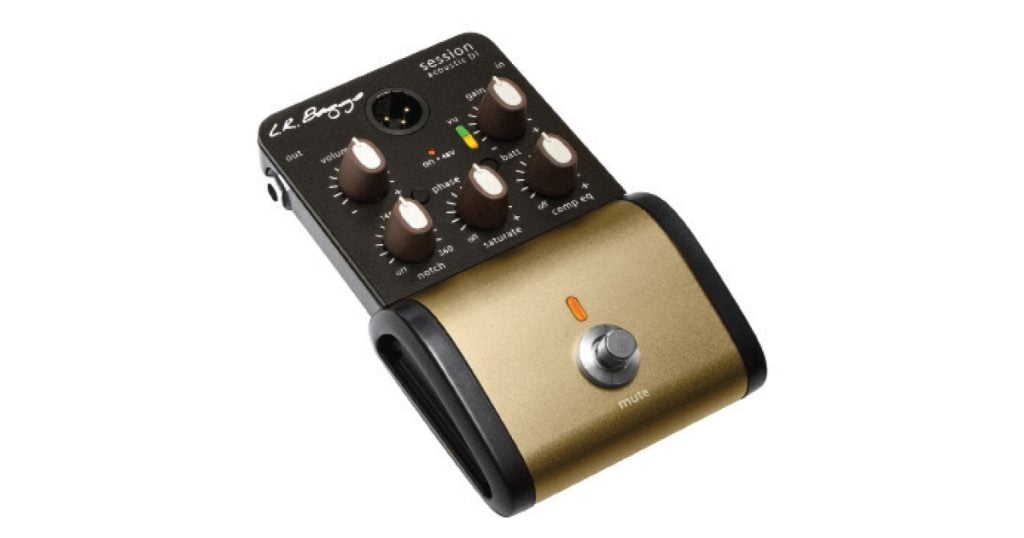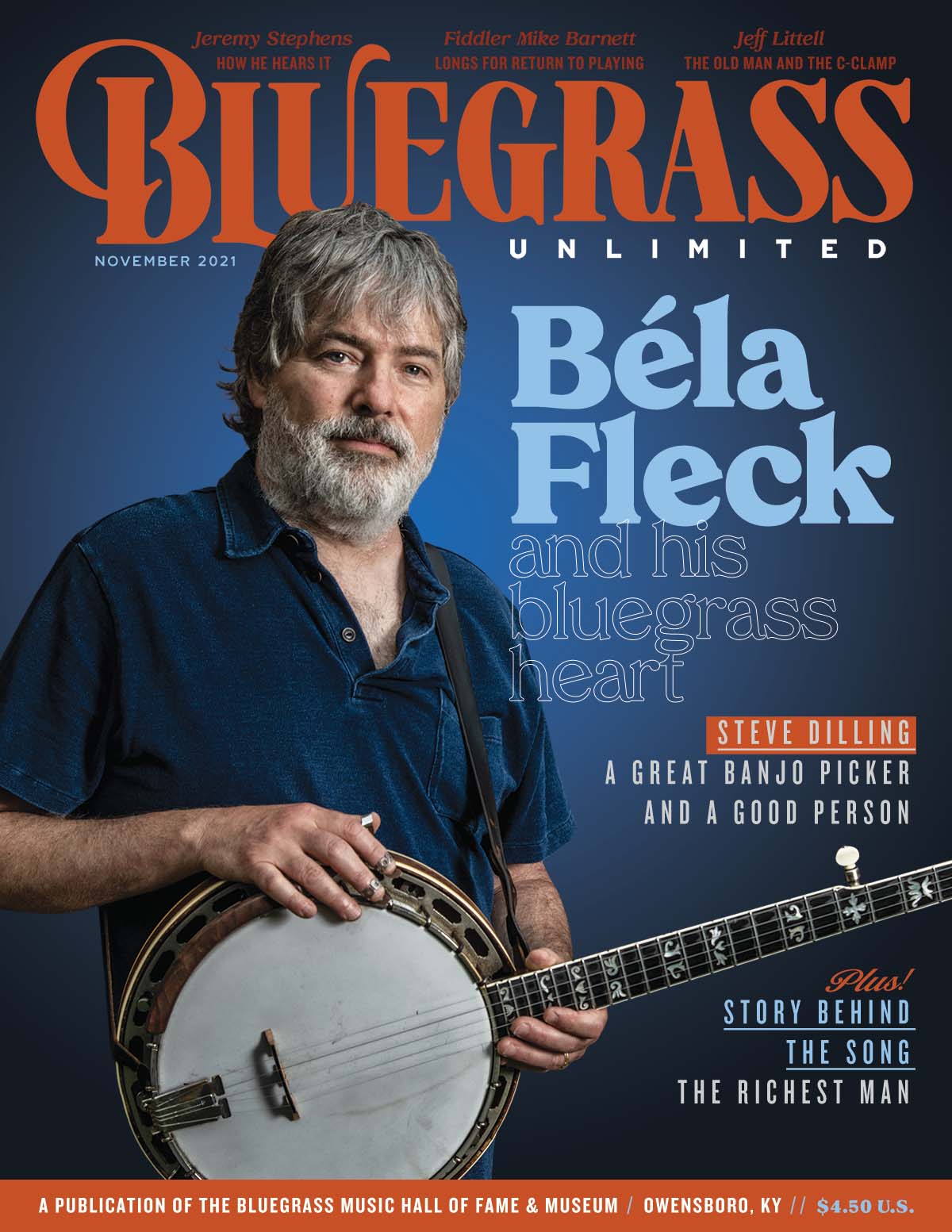Gear Review
If you have ever played an acoustic instrument into an amp or PA using a direct input (DI) box to control your EQ, volume and tone, you are likely to be familiar with LR Baggs. Known for stellar acoustic pickups like the Lyric bridgeplate microphone, the company earned a spot in countless acoustic musicians’ gear bags for its legendary Para Acoustic DI, which has been so successful it’s still in production decades after its launch. That iconic brown EQ pedal gave a wee bit of open space and airiness to pickup-equipped guitars, and gave musicians feedback-squelching notch filters and better control over their EQ. And its tank-like, road warrior-ready design and build quality made it virtually bombproof. But that classic pedal was never engineered to mimic the quality of a studio recording with high-end signal processing and top-shelf mics. Enter the $249 LR Baggs Session Acoustic DI, which a company spokesman told me was engineered specifically for flattop acoustic guitars. More on that later. To quote the Baggs website: “The Session DI enhances your acoustic pickup and imparts the rich sonic character that you*d expect from an experienced audio engineer using some of the world*s finest studio gear. We*ve captured this studio magic and put it into a compact, easy-to-use DI that will transform your live sound.”
Does it live up to that hype? In the live gig settings I’ve used it, and in head-to-head tests between plugging the guitar straight in to a Fishman Loudbox Mini, using the Para Acoustic DI, and the Session DI, the newer pedal definitely adds more presence and airiness to a pickup-equipped acoustic guitar’s sound. It lends an overt musicality to the signal. The Session DI brought a previously unheard warmth and intimacy out of a K&K Mini-outfitted Bourgeois Country Boy OM.
Compared to the venerable Para Acoustic DI, the Session DI clearly added much of the sonic warmth, saturation and definition that set a studio recording apart from the typical plugged-in sound on stage. And it showed some interesting capabilities for use with other acoustic instruments.
At a recent gig, the band all heard a big difference and complimented the guitar sound the Session DI produced through the amp, even though this time it was an Eastman acoustic archtop with a no-name piezo pickup implanted. Same when the pedal was supporting a 2020 Northfield Artist F-5 fitted with the Baggs mandolin pickup, much to the company’s surprise. The pedal clearly helped retain much of the headroom and crystalline high end in the signal, while handling the percussive attack of a chop chord without break-up. It didn’t sound like the instruments playing into an on-stage condenser as much as it did on a flattop guitar, but the pedal lived up to a lot of the marketing hype.
So where’s the magic, the secret sauce, that makes this stage tool stand out? The production team at Baggs set out to build into the Session DI many features used by studio engineers to sweeten the sound of recorded acoustic instruments. The pedal uses what Baggs calls Analog Saturation to add warmth, definition, and pleasing harmonics. Baggs voiced the Session’s saturation specifically for the acoustic guitar to bring studio analog warmth and depth of sound to the working musician’s stage rig.
Maybe the pedal’s most impactful feature is the Session’s impressive Compression EQ. As they explain online, “… the Session DI*s Comp EQ features three narrowly focused bands of compression that tame common problematic frequencies and uncover the voice of your guitar. The low, mid and high frequency compressors are essentially ‘touch-sensitive’ EQs that respond in real-time to your dynamics. The harder you strum (or pick), the more they compress and vice versa.” In real-world use, that function audibly improved the pickup sound and added noticeable touch sensitivity to both left and right hand attacks, although the amped sound can be unpleasantly stifled if the effect is turned too high up.
The Session DI boasts a heavyweight steel/aluminum casing that screams durability as soon as you pick it up. The pedal uses two 1/4” guitar jacks for input and output to a guitar amp, plus an XLR output so you can run the pedal directly to the mixing board, a thoughtful feature. The Session DI also provides 48v phantom power.
On top we find easily readable knobs for Volume, Gain, Notch, Saturate, and Comp EQ, along with a small but useful three-color VU meter to alert the user when the signal is clipping. A small button lets you do a quick check on the strength of the battery to avoid mid-gig drop outs, and the Session DI may be powered using a DC adapter to eliminate the need for 9-volt batteries. A heavy-duty built-in foot switch controls the Mute function, allowing the user to cut off the signal from the instrument while tuning, along with a pop-free exchange between instruments. A ground lift switch on the side effectively eliminates ground-loop noise, and there’s a phase button for phase inversion to accommodate certain acoustic situations.
Final word is that the LR Baggs Session Acoustic DI is a small, powerful, reasonably priced acoustic guitar signal processing pedal that can certainly enrich and support pickup signals from bluegrass guitars, and to a lesser degree mandolins, without getting overly complicated. It might even work similarly with a Dobro, but banjo is definitely out. Of course, DIs from other manufacturers make similar claims, so do the online research, and test a few out in person. But whether you’re a longtime Para Acoustic DI user or someone new to the often perplexing world of getting good acoustic sound out of a plugged-in bluegrass instrument, the LR Baggs Session DI is well worth a test drive.

